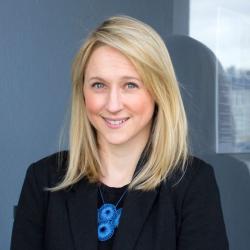Iceland Academy of the Arts (Listaháskóli Íslands) was founded in 1999 and it’s the only university in Iceland dedicated to the arts. We called up Rector Hjálmar H. Ragnarsson and asked him to tell us more about the university, its programmes and its future plans.
First of all, what is the Iceland Academy of the Arts? What’s being taught there?
The Iceland Academy of the Arts is a university level institution providing education in the arts—design and architecture, fine arts, music, theatre and dance, and art education. The programmes are mostly on the bachelor’s level, but there are also master’s programmes in some fields.
We are the only institution of this kind in Iceland, so you could say we are a national school of arts. We emphasise contemporary art and art creation. We are very connected to the contemporary art scene and I’d say we are a major force in Icelandic artistic life, putting on all kinds of exhibitions, concerts, and performances over the year.
What about film and photography? Why doesn’t the school have these departments?
The only major art that we don’t have is film. In 2004, and again in 2008, we proposed a film programme, but we were not able to get financial support from the State. The government decided instead to support The Icelandic Film School, which is not at the university level. People are very divided on the issue. Still, we are hoping to get the programme started and I’m optimistic that we will be able to do it in next few years.
We have also proposed a plan for a photography programme in the Department of Design. In 2008 after the crash, all the plans were put aside. We just had to protect what we had. For now we have a photography lab and we have teachers coming and a special tutor. But there’s a lot of interest and a great need for such a programme, which doesn’t exist in Iceland. It’s part of our long-term plan.
What kind of person attends the school?
We get applications from all over the world and accept about one out of five who apply, though in some fields it is higher. Students send in an application with a portfolio of work showing their independent artistic character. Students have to fulfil standard requirements, like passing the stúdentspróf [matriculation exam] and they must convince us that they are very passionate about what they are doing, that they are inventive and courageous.
We choose students from a large pool and I don’t hesitate to say that our students are some of the most gifted in Iceland. There is no stereotypical student, but they are all passionate about creating something new. Today there are about 460 students enrolled.
The Academy has been trying to build a new facility for some years now. Where do those plans stand? Is there enough space for the students?
In the fall of 2008 we had proposed plans for an Academy at Laugavegur, but since the collapse nothing has happened. The State is not ready to support [the construction] financially, and the Reykjavík City Council has not approved the plan for it. Everything is frozen. There are politics involved and opinions are divided about whether it should be at the proposed location. However, the Board of the Academy adamant that it should be downtown. An Academy should be a major force in city life and the students also benefit from being part of city life, rather than being isolated from it. It’s part of art life to connect to the city.
Now our campus is in three areas around town so students have to travel between facilities, which is not ideal. Currently the Academy is financed mostly by the State and a small part by tuition [350.000 ISK/year]. We have good relations with the government and have some short-term plans for improving the situation and long term plans for building a new facility.
Education in the arts is extremely important in Iceland and it has wider importance as well. It’s a major force in the creative industries and Iceland’s identity is very connected to how we form our ideas in the different fields of art.
Is it being threatened by cutbacks?
There have been serious cutbacks, but not more than at the other universities. When the collapse happened we were next in line to start new programmes like photography and film, but those plans are on hold for the time being. Now our major task is the develop master’s programmes in a greater number of fields.
Buy subscriptions, t-shirts and more from our shop right here!
















